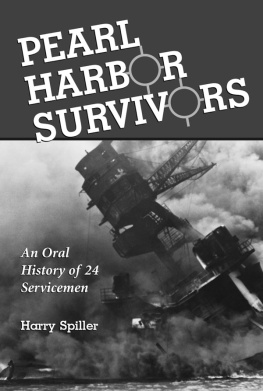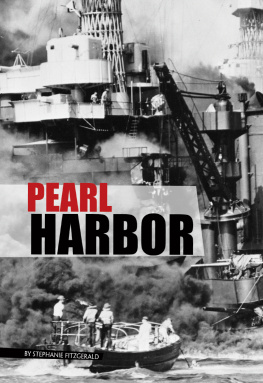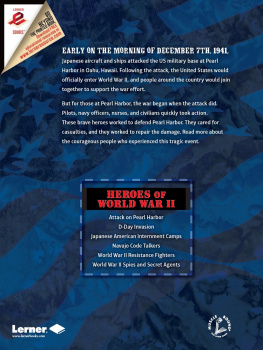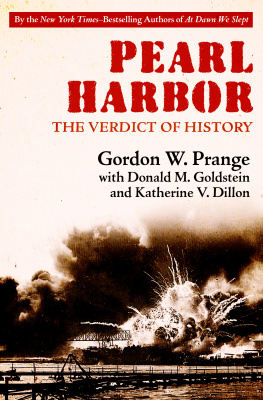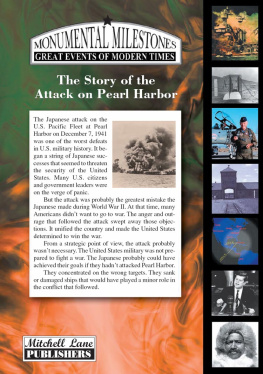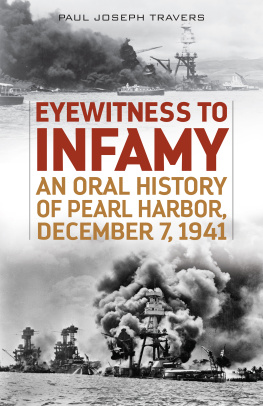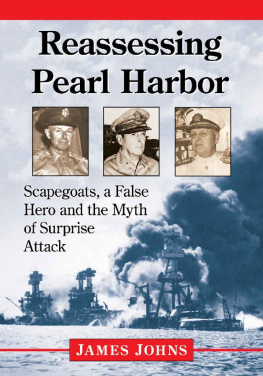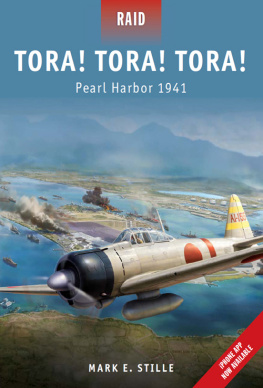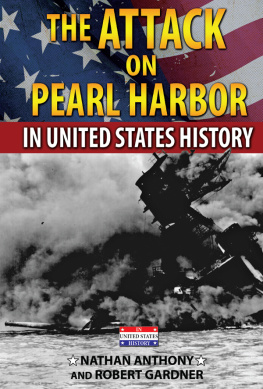
Contents
The capsized USS Utah, and the USS Raleigh in the background, after the Japanese attack on Pearl Harbor, December 7, 1941.
Also by Harry Spiller
Scars of Vietnam: Personal Accounts by Veterans and Their Families (1994; paperback 2012)
Death Angel: A Vietnam Memoir of a Bearer of Death Messages to Families (1992; paperback 2012)
Support Programs for Ex-Offenders: A State-by-State Directory (2011)
American POWs in World War II: Twelve Personal Accounts of Captivity by Germany and Japan (2009)
American POWs in Korea: Sixteen Personal Accounts (1998)
Prisoners of Nazis: Accounts by American POWs in World War II (1998)
Library of Congress Cataloguing-in-Publication Data
Spiller, Harry, 1945
Pearl Harbor survivors : an oral history of 24 servicemen / Harry Spiller.
p. cm.
Includes index.
ISBN-13: 978-0-7864-1179-5
1. Pearl Harbor (Hawaii), Attack on, 1941Personal narratives. 2. World War, 19391945Personal narratives, American. 3. United StatesArmed ForcesBiography. 4. Oral historyUnited States. I. Title.
D767.92.S65 2002
940.54'26dc21 2001051315
British Library cataloguing data are available
2002 Harry Spiller. All rights reserved
No part of this book may be reproduced or transmitted in any form or by any means, electronic or mechanical, including photocopying or recording, or by any information storage and retrieval system, without permission in writing from the publisher.
Cover photograph: 2001 Corbis Images
McFarland & Company, Inc., Publishers
Box 611, Jefferson, North Carolina 28640
www.mcfarlandpub.com
To all of those who
were on Oahu, Hawaii,
on December 7, 1941,
and their families.
Introduction
At 7:55 on Sunday morning, December 7, 1941, a date that will live in infamy, the Japanese naval and air forces suddenly attacked United States military installations of the Marines, the Army, the Navy, the Coast Guard and the U.S. Pacific Fleet at Pearl Harbor.
The attack lasted nearly two hours with two separate waves of planes. By the time it was over, approximately 2,400 men were killed and another 1,500 wounded.
The Japanese concentrated their attack on the seventh fleet at Pearl, and because of this the action is most often referred to as the Pearl Harbor attack. This designation has sometimes overshadowed the fact that all stations suffered casualties and severe damage; there was great anguish among the soldiers of the forts and the airmen of the Army, Navy, and Marine Corps, many of whom committed acts of heroism during the sweeping Japanese assault.
Those who were there that day will never forget. Others will remember the news and the shock and disbelief that they experienced when they received the news.
To get a true picture of what it was like to be suddenly running for your life in a rain of .50 caliber rounds from a Japanese Zero, to watch helplessly as battleships were sunk, airfields destroyed, barracks levelled, to be trapped inside a dark ship that was slowly capsizing, or to swim through burning oilone needs to walk in the footsteps of men who lived through the attack on Oahu.

Aerial shot of eet anchored in Pearl Harbor, altitude 4,000', looking northwest.
This book contains 24 personal accounts of men who on Sunday morning, December 7, 1941, suffered the attack by the Japanese forces. The stories run the gamut from men at Kaneohe Air Station and Hickam Field, to an officer, one of only a handful of men, who escaped the USS Oklahoma after she capsized, and to men of the USS Nevada, the only battleship which got underway during the attack to Schofield barracks. It should be understood that there are accounts of experiences and the scenes of action witnessed and reported from more than one pointnaturally, these are different versions of the same events. The credibility of the persons reporting and the facts reported has been found unimpeachable. I chose these stories because they are original reflections from survivors of the Pearl Harbor attack.
I was born in 1945, just before the end of the war, and grew up hearing stories and watching movies about World War II. This era has continued to fascinate me and is the inspiration for writing this book. The information for it came from interviews with Pearl Harbor survivors, personal documents of Pearl Harbor survivors, military records from the National Archives in Washington, D.C., the National Headquarters of the Pearl Harbor Association, the U.S. Department of the Navy in Washington, D.C., and from another book on Pearl Harbor survivors published by Turner in 1992.
The stories in this book are real, they are compelling, and they give a true picture of the December 7, 1941, attack on Oahu, Hawaii, by the Japanese Empire. I would like to thank Robin Greenlee, Kathy Young, and the men who were willing to share their experiences of the Day of Infamy.
Chapter 1
The Attack
EARLY MORNING, DECEMBER 7
At 3:42 A.M., the minesweeper Condor (AMC14), on a sweeping station about a mile and a half from the entrance of Pearl Harbor, spotted an object off the port bow. The officer of the deck called the quartermaster and asked what he thought it was. The quartermaster studied the object through binoculars and agreed with the officer of the deck that it was a periscope. There were no submarines supposed to be in the area, so the Channel Entrance Patrol considered this a serious problem.
At 0357, the Condor sent a message by yardarm blinker to the destroyer USS Ward (DD139) saying, Sighted submarine on westerly course, speed 9 knots.
The USS Ward was cruising at 15 knots, patrolling a two-mile square just off the entrance to Pearl Harbor. The captain of the Ward, aware of the critical relationship between the United States and Japan, ordered general quarters and asked the Condor for the submarines course and speed. The response was the last sighting, at 0350: the submarine was headed for the harbor entrance.
The Ward began a sonar search but did not make contact, and at 0435 secured general quarters.
The USS Antares (AKS3), a stores and supply ship, with a lighter in tow, moved slowly toward Pearl Harbor. Her captain, Commander C. Grannis, waited for a tug and a harbor pilot to bring Antares to her berth in Pearl Harbor.
At 0630, the captain spotted an object about 1,500 yards on the starboard side. The object did not resemble any submarine that he had ever seen, but its conning tower was above the surface indicating that it was a submarine of some kind. The submarine appeared to be having depth control problems.
The Ward was notified of the sighting and once again general quarters were sounded at 0640. The Ward set all engines full speed ahead and started toward the submarine. The Ward opened fire and missed with the first shot, but the second hit right at the waterline and the conning tower. The submarine quickly slowed and sank. The Ward passed over and dropped a depth charge set at 100 feet.
The captain of the Ward immediately contacted the 14th Naval District watch officer and made the following report. We have dropped depth charges upon a submarine operating in the Defensive Sea Area. After thinking for a moment, he concluded that he should be more precise and sent a second message. We have attacked, fired upon and dropped depth charges upon a submarine operating in the Defensive Sea Area. A Bishop Point radio station logged the message at 0653, one hour and two minutes before the Pearl Harbor attack.
Next page
